‘Too close to call’? Accounting for satisfaction with party leadership would have helped better predict the General Election
A good predictor of electoral outcomes over the past nine UK general elections has been survey questions asking about satisfaction with the leaders of the two main parties. That measure, however, combines responses from people who support the party and those who don’t. Here, Ruth Dixon explores leader satisfaction among party supporters as a way of measuring the level of ‘enthusiastic support.’ In 2015, these results showed a clear advantage for David Cameron, when voting intention alone suggested the election was too close to call.
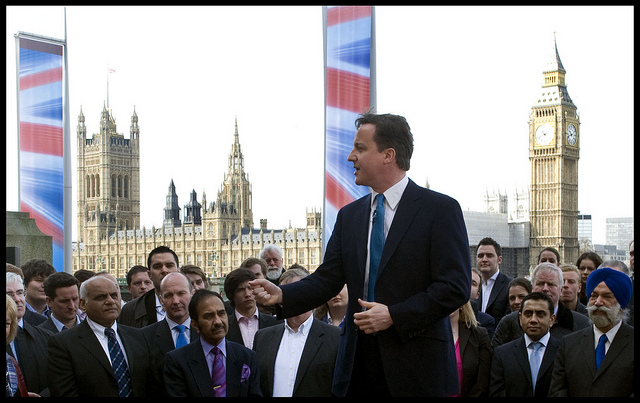
David Cameron during his 2010 Election launch speech. Credit: Andrew Parsons CC BY-NC-ND 2.0
Using the Ipsos MORI polls since 2010, I calculated the percentage of the electorate who both support a party and are satisfied with its leader (and also the percentage who are satisfied with the leader but don’t support that party). These data series are shown in Figure 1.
Figure 1: Leader Satisfaction Among Party Supporters by Voting Intentions (dark series – among who all name a party) and subtracting that percentage from overall leader satisfaction rating (light series) (Ipsos Mori)
Conservative supporters were consistently more satisfied with David Cameron (averaging 79 per cent satisfied) than Labour supporters were with Ed Miliband (51 per cent) and (after Sept 2015) with Jeremy Corbyn (54 per cent). Applying this to the electorate at large meant that for most of the period more people supported the Conservative party and its leader than supported the Labour party and its leader. The Liberal Democrats, with a much smaller voter base (about 11% of the electorate), had few supporters of both that party and its leader, although the leader scored well among both party and non-party supporters.
Figure 2 shows satisfaction with their own leader among supporters of the two main parties, expressed as a percentage of the whole electorate. We might term these the ‘enthusiastic supporters’ who may be more likely to vote.
Figure 2: Party Supporters views on their leader (Source as figure 1)
Cameron’s eight percentage point lead among ‘enthusiastic voters’ just before the May 2015 election seen in Figure 2 contrasts with the much less clear-cut picture given by ‘voting intention’ alone (Figure 3, below). At that time the result was, according to the polls, ‘too close to call,’ even though that election resulted in an overall Conservative majority.
In summary, the proportion of the electorate who are satisfied both with a leader and with their party may be a useful supplement to other predictors of electoral outcomes.
—
This post originally appeared on Ruth’s own blog and was also featured on the LSE British Politics and Policy blog. It represents the views of the authors and not those of Democratic Audit or the LSE. Please read our comments policy before posting.
—
 Ruth Dixon has worked at the Department of Politics and International Relations at Oxford University since 2006.
Ruth Dixon has worked at the Department of Politics and International Relations at Oxford University since 2006.

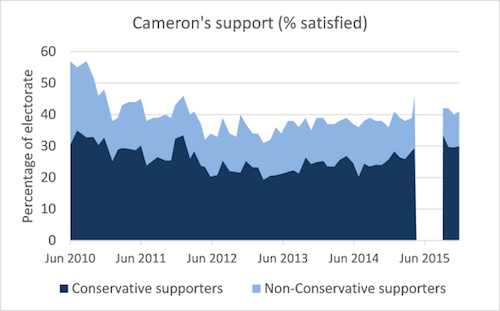
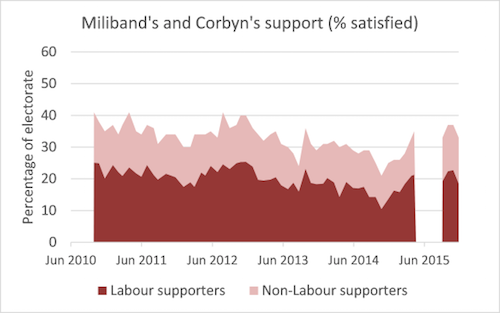
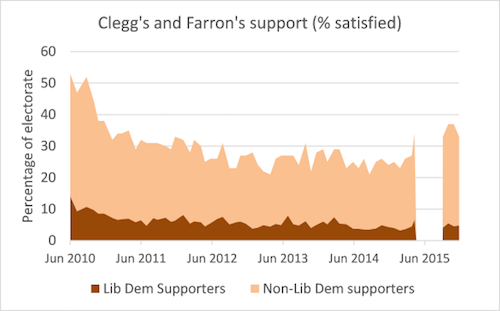
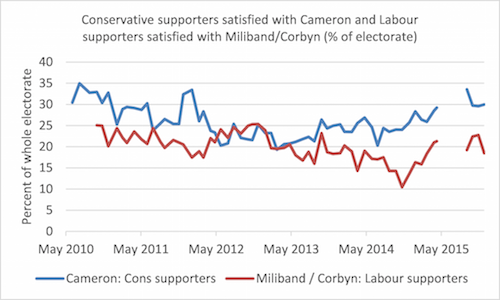




 Democratic Audit's core funding is provided by the Joseph Rowntree Charitable Trust. Additional funding is provided by the London School of Economics.
Democratic Audit's core funding is provided by the Joseph Rowntree Charitable Trust. Additional funding is provided by the London School of Economics.
‘Too close to call’? Accounting for satisfaction with party leadership would have helped better predict the Ge… https://t.co/Nz8kj8CeM7
‘Too close to call’? Accounting for satisfaction with party leadership would have helped… https://t.co/NeIKQBfSQg https://t.co/L7sLZGdj32